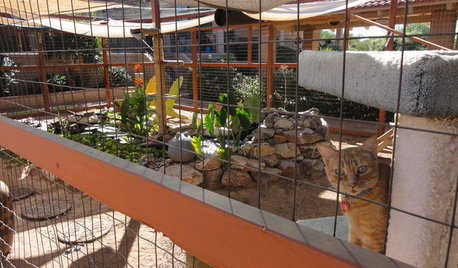When to use Preen
redsox_gw
15 years ago
Featured Answer
Comments (28)
ken_adrian Adrian MI cold Z5
15 years agoRelated Professionals
Hershey Landscape Architects & Landscape Designers · Brentwood Landscape Contractors · Williamsburg Landscape Contractors · Matthews Landscape Contractors · Tempe Landscape Contractors · Apollo Beach Landscape Contractors · Cary Landscape Contractors · Corona Landscape Contractors · Cudahy Landscape Contractors · Lake Zurich Landscape Contractors · New Cassel Landscape Contractors · Streamwood Landscape Contractors · Tacoma Landscape Contractors · Woodburn Landscape Contractors · Raytown Landscape Contractorsmxk3 z5b_MI
15 years agospazzycat_1
15 years agokaren__w z7 NC
15 years agoredsox_gw
15 years agospazzycat_1
15 years agogottagarden
15 years agogardengal48 (PNW Z8/9)
15 years agoredsox_gw
15 years agogardengal48 (PNW Z8/9)
15 years agorusty_blackhaw
15 years agogardengal48 (PNW Z8/9)
15 years agorusty_blackhaw
15 years agosunnny
15 years agoMary4b
15 years agogardenfanatic2003
15 years agoechinaceamaniac
15 years agoveilchen
15 years agorusty_blackhaw
15 years agolinnea56 (zone 5b Chicago)
15 years agotbyoder_verizon_net
13 years agomarla_2010
13 years agobuyorsell888
13 years agomebmus_yahoo_com
13 years agopdafma_yahoo_com
12 years agowieslaw59
12 years agorusty_blackhaw
12 years ago
Related Stories

BEFORE AND AFTERSA Made-Over Living Room Preens Like a Peacock
Spirited accessories and his-and-her furnishings feather a family’s nest splendidly
Full Story
DECORATING GUIDESRoom Doctor: 10 Things to Try When Your Room Needs a Little Something
Get a fresh perspective with these tips for improving your room’s design and decor
Full Story
HOUSEKEEPINGGot a Disastrously Messy Area? Try Triage
Get your priorities straight when it comes to housekeeping by applying an emergency response system
Full Story
WINDOW TREATMENTSA Surefire Way to Prevent Sun Damage Indoors
Why let light ruin your furniture, floors and artwork, when the solution could be as simple as applying high-quality window film?
Full Story
COLOR7 Unexpected Color Splashes for Bathroom Sinks
Make over your sink with paint for a new look that’s playful, sophisticated or wonderfully soothing
Full Story
COLORDreaming in Color: 8 Pretty-in-Pink Bedrooms
Don't be afraid to rethink pink: Try softer hues for soothing comfort or bolder tones for a touch of drama
Full Story
PLANTING IDEASWant a More Colorful, Natural Garden? Try a Perennial Meadow
Spend less time tending and more time taking in the sights by improving on Victorian and prairie garden designs
Full Story
PETSSee a Deluxe 'Catio' Built for Feline Fun
Sixteen lucky cats get the run of a protected outdoor patio with ramps, steps and even a koi pond
Full Story
GARDENING AND LANDSCAPINGPave the Way to Landscape Style With Flagstone
Define a patio, build a path, make a fire pit ... learn about flagstone's many uses, plus costs and considerations, here
Full Story
INSPIRING GARDENSNative Plants Bring 10 Southern California Front-Yard Gardens to Life
Rare plants, rain gardens and wildlife habitats are just a few of the features showcased on the 2016 Theodore Payne Native Plant Garden Tour
Full Story





steve1young